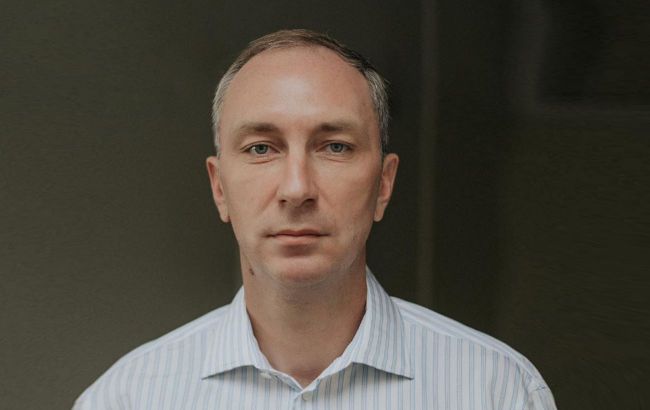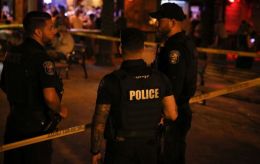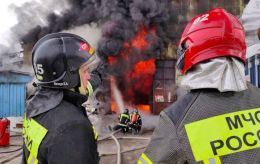'Russians aim to sow panic and terrorize the region.' Interview with Sumy governor Oleh Hryhorov
 Oleh Hryhorov (All photos: Regional Military Administration press service)
Oleh Hryhorov (All photos: Regional Military Administration press service)
For almost four years, the frontline territories of Ukraine have been suffering from intense shelling and the constant threat of the front's proximity. However, the attacks have recently intensified. Ahead of winter, Russia is trying to make life in Ukraine unbearable — and the border regions are suffering the most.
The Sumy region is hit every day by nearly everything in Russia’s arsenal. Frontline villages are almost destroyed, people are being evacuated, and in the regional center, residents are trying to keep life going despite constant strikes on both critical and civilian infrastructure. Head of the Sumy Regional Military Administration, Oleh Hryhorov, describes how Sumy is coping with the war in an interview with RBC-Ukraine.
Here is an abridged version of the conversation with Oleh Hryhorov.
Constant attacks
Daily attacks have become an everyday reality in the Sumy region. In October, there were nearly 2,700 strikes; September saw almost 3,000. As for the human toll, eight people were killed in the region in October and 108 were injured, including eight children.
Russia is striking Sumy with guided aerial bombs and strike-type unmanned aerial vehicles such as Shahed, Gerbera, and Italmas, depending on how close targets are to the frontline. The strikes hit the city of Sumy and other towns across the region, but mostly target frontline communities closest to the fighting.
"Because we're close to the front and due to the length of our border with Russia — 562 kilometers — the density of strikes is much higher compared with central and western regions. Unfortunately, we have both dead and wounded. There are strikes on civilian infrastructure and residential buildings," Hryhorov says.
Drones are the main weapon used against the Sumy region because the Russians have many of them. The primary targets are critical and military infrastructure, but strikes are often chaotic, which leads to damage to homes and civilian casualties. The Russians do not spare the civilian population. According to Hryhorov, the Kremlin's objective is simple terrorism.

"I am firmly convinced that this is Russia's aim — by killing civilians and children and destroying civilian infrastructure, they want to sow panic and thus terrorize the Sumy region,” Hryhorov notes.
Given the large number of attacks, the region needs more air-defense systems. This issue is discussed weekly by the Defense Council, with all necessary agencies involved. Sumy and local community budgets have already allocated more than 1 billion hryvnias (almost $24 mln) to support the Armed Forces of Ukraine and other security and defense components. A priority among these funds is strengthening air defence.
"We constantly monitor this situation because the military aspect is extremely dynamic. It's digitizing on both sides. For example, certain electronic warfare or strike systems that were relevant a few months ago are now losing relevance. That's why continuous monitoring, understanding, and the most effective targeted allocation of funds are needed," Hryhorov adds.
Evacuation from frontline areas
Evacuation has been declared in 213 settlements across the region — that's 18 frontline communities. So far, just over 57,000 people have been evacuated. The pace of evacuation has slowed down, as most residents have already left. However, it continues: in October, about 260 people, including 21 children, were evacuated; in the past 24 hours, 8 people were evacuated.
Authorities in the Sumy region constantly stress that people should not return to areas where danger still exists — especially in the summer, when residents tend to go back to work on their gardens. Yet, once the situation improves and shelling becomes less frequent, people start returning home. Some even refuse to evacuate entirely. The regional administration has collected around 20,000 written refusals from people unwilling to leave.
"Probably no one wants to abandon their home because it's hard to imagine how to start a new life elsewhere. I want to emphasize that for those who do evacuate, we have designated housing locations in the region, and we keep informing people about these options. Humanitarian and other assistance is also provided," said Hryhorov.
Since the beginning of the full-scale invasion, the Sumy region has registered nearly 90,000 internally displaced persons (IDPs), of whom over 74,000 are residents of the region. In total, there are more than 100,000 IDPs officially registered in the Sumy region — both locals displaced from border areas and people who arrived from other parts of Ukraine.

Additionally, over 56,000 residents of the Sumy region have evacuated to other parts of the country — including Kyiv, Lviv, Poltava, Zakarpattia, and other regions.
It's worth noting that all children subject to mandatory evacuation — a little over 8,000 in total — have already been evacuated. Some children remain in the frontline communities, but their number is quite small, and measures are being taken to ensure their evacuation as well.
Humanitarian situation in the region
Recently, the Russians have been actively analyzing the results of their attacks, assessing their effectiveness. If they see that, despite the strikes, electricity and heat are still available, they increase the intensity of attacks and continue their attempts to destroy key critical infrastructure facilities. For this reason, the regional authorities try not to publicize the process of restoring the damage after the attacks.
"For us, it's more important that people in their homes have light and heat. That's probably the main measure of how well our power engineers, authorities, and air defense are doing. But I can say that thanks to our utility services and energy workers, we know what to do," said the head of the Regional Military Administration.
In addition, residents of the Sumy region receive benefits for utility services — the main one being support for people during the heating season. Each frontline family receives 19,400 hryvnias (around $460) to provide solid fuel. There are also funds allocated for internally displaced persons: 2,000 hryvnias (almost $50) for families with children, and a one-time payment of 10,000 hryvnias (around $240) from Ukraine's international partners.
"We are currently considering specific programs and forming the budget. When planning it, we take into account the relocation of businesses and prioritize support for communities and social benefits for frontline areas," Hryhorov added.
Housing reconstruction after attacks
Rebuilding the city and restoring destroyed facilities remain a top priority for the Sumy region. Following a visit from Interior Minister Ihor Klymenko, the Sumy regional authorities proposed an initiative to conduct remote inspections of destroyed and damaged housing.
"We introduced an approach that allows frontline communities to conduct remote inspections instead of sending out commissions, which was dangerous due to constant shelling," said Hryhorov.
Housing reconstruction and corresponding compensation programs are also among the region’s key priorities. In the city of Sumy alone, the region needs over 78 million hryvnias for reconstruction work, with about 30 million hryvnias (around $716,000) already planned. The eRestoration program has received nearly 7,000 applications for assistance — meaning hundreds of millions in compensation that people have already received from the state budget.
A rescuer inside a destroyed building (Photo: press service of the State Emergency Service in the Sumy region)
"We're seeing real progress in implementing the Cabinet of Ministers' resolution that allows for remote inspections. Since this project is still a pilot, it's being constantly refined. I'm glad that at the government level, within the Association of Communities, and through personal communication, we’re able to quickly consolidate and address these issues," said the head of the Regional Military Administration.
Subsidies, business activity, and schools
The Ukrainian government is allocating subsidies for recovery following Russian attacks. Currently, 121 million hryvnias (about $2,900,000) have been directed toward the protection of critical infrastructure facilities. Additionally, hundreds of millions more are being allocated to support the healthcare sector. Following the visit of Ukrainian Prime Minister Yuliia Svyrydenko, the Sumy region received a decision to allocate millions from the reserve fund for the purchase of fuel and lubricants to ensure the stable operation of generators in case the situation worsens.
When it comes to business activity, the main challenge remains constant shelling.
"With all due respect to our colleagues and friends from the western regions, running a business under the conditions we have in Sumy, Kharkiv, Mykolaiv, Kherson, and Chernihiv is extremely difficult. In the Sumy region, air raid alerts can sound 24 hours a day," said Oleh Hryhorov.
The authorities are working to support local businesses. Two months ago, the region introduced a new system of differentiated air raid alerts.

"For example, when a plane takes off from Millerovo (Russian airbase - ed.), an alert is declared across all regions. But if we understand that the threat only concerns certain districts, the alert is issued only there. Other areas can continue working, meaning businesses know there’s no real danger and can keep operating,” explained the head of the Regional Military Administration.
Many business support programs are currently in place. The Sumy region is the only one where a pilot project is running jointly with the government and agricultural businesses. The initiative, called Status of an Affected Enterprise, allows entrepreneurs to obtain this status through regional documentation, granting them specific benefits and preferences afterward.
As for education, 332 kindergartens and 291 schools are currently operating in the Sumy region. Most of them use a mixed learning format, while in-person classes — both in schools and kindergartens — are organized in safer areas, primarily in the Romny and parts of the Okhtyrka districts.
"We're actually building underground schools, with subsidies allocated for this purpose. So far, there are already five underground schools in the region, and another eight are under construction," said Hryhorov.

